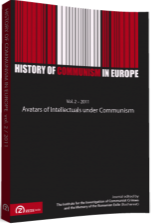Albanian alternative artists vs. official art under communism
Albanian alternative artists vs. official art under communism
Author(s): Fjoralba Satka MataSubject(s): History
Published by: Zeta Books
Keywords: Art history; art and politics; socialist realism/ totalitarian art; avatars of Albanian artists; Albanian official painting
Summary/Abstract: Behind the European Iron Curtain another “iron curtain” was drawn, between Albania and the rest of the socialist countries in Europe. Its architect was the dictator Enver Hoxha, who constructed Albanian national identity as a gated community based upon the dialectics of inclusion and exclusion. As a result, “socialist realism” Albanian art under communism can be differentiated clearly from art in other socialist countries. Political power and ideas on culture and particularly on painting meant birth of an official kind of art, parallel with an alternative art which I named painting in the shadow. The idea of painting in the shadow gives creators the possibility to operate on two levels. The first is the internal, psychologically sequential level of the creative process itself. This refers to selective activities and elaborate ideas using pictorial means from forbidden modern art – impressionism, expressionism, abstractionism. On the second level, artists operate beyond individual intentions just to indicate political position and rhetorical application of specific ideological regulations. Both levels are of interest to art practices in that they serve to reinforce artists’ position in official art in general, and to develop the artistic avatar on the private scene of painting in the shadow in particular. I am interested here in the first level, where avatars of Albanian artists under communism can be differentiated due to aspects of their styles and courage to react beyond the offcial rules. The basic problem with the contemporary interpretation of that unknown painting in the shadow is that it does not seem to take account of the fact that viewers nowadays are free to interpret, while painters were brought to heel in the face of the “method of socialist realism”.
Journal: History of Communism in Europe
- Issue Year: 2011
- Issue No: 2
- Page Range: 73-94
- Page Count: 22
- Language: English
- Content File-PDF

